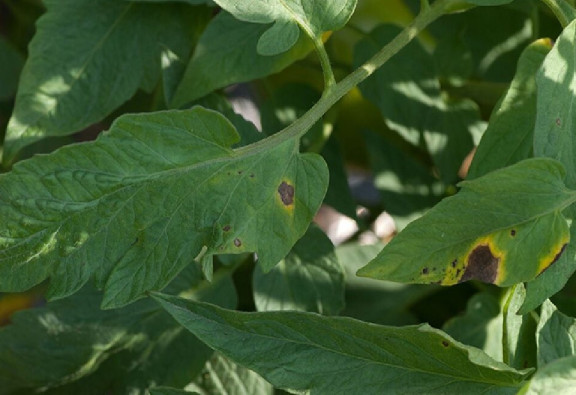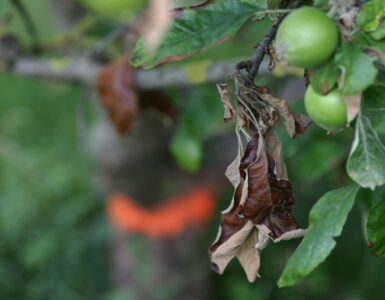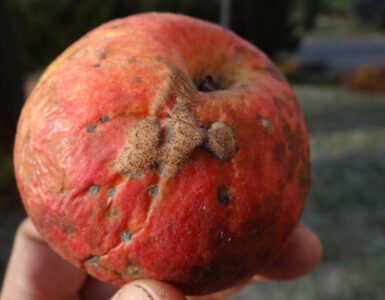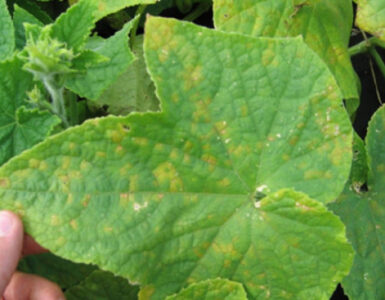Have you ever noticed circular, dark brown lesions on the older leaves of your plants? If so, it could be early blight.
This common fungal disease affects a wide range of plants, including vegetables and ornamental plants. Fortunately, there are some simple and natural ways to help prevent and treat early blight.
What Is Early Blight?
As mentioned, early blight is a fungal disease. It affects tomatoes, potatoes, and other vegetables. It is primarily caused by a fungus called Alternaria solani [1].
With the right conditions, the disease can spread quickly. It first manifests as small brown spots on the older leaves of affected plants.
As the disease spreads, the leaves turn yellow, wither, and die. If left unchecked, early blight can lead to significant crop damage.
Plants That Early Blight Affects
It is most commonly found on tomato and potato plants, but other plants can also be affected. These include eggplant, peppers, and tomatillos.
Watch out for early blight if you have any of these host plants in your garden.
How to Get Rid of Early Blight Naturally
These few home remedies and natural methods can help you control early blight and protect your plants.
1. Prune or Stake Plants
Pruning or staking your plants is an effective way to control early blight naturally. Staking plants, such as tomatoes, is also a good idea.
Staking also helps create better air circulation, allowing the plant’s leaves and fruits to dry quickly after rain. Plus, clipping branches can help promote healthy airflow around the plant.
You should also prune away any dead leaves or stems from your plants. Removing dead foliage as soon as you notice it can significantly reduce the spread of this disease in your garden.
2. Avoid Overhead Watering
One of the best preventive measures against crop blight is to avoid overhead watering.
It sounds simple enough, but it makes all the difference. Water droplets that linger on leaves raise the chances of fungal diseases, such as early blight.
Rather than watering from above, opt for drip irrigation. Drip irrigation sends water directly to the roots, avoiding the upper parts of the plant.
3. Mulching
Mulching helps reduce the splashing of fungal spores onto the leaves of your plants.
Dry grass clippings and straw are excellent organic mulches. They can also increase the fertility of your soil over time.
4. Disinfect Gardening Tools
Gardening tools can also spread early blight and other fungal diseases. Therefore, it is essential to take steps to prevent this.
Scrubbing your tools with a soapy solution is the easiest way to keep them clean and help maintain their functionality.
Let your tools soak for 10 minutes before rinsing them with clean water. Doing so will help get rid of any fungus or mildew that may be present on them.
5. Essential oils
Tea tree essential oil can fight fungal diseases in tomato plants. Its natural antifungal properties help protect your garden. Oils like caraway, thyme, and carnation oil also help [2].
Make one cup of water and 20 drops of essential oil solution, and spray your gardening tools with it after each use.
You can also make a homemade early blight spray for your plants. Combine 20 drops of essential oil, two tablespoons of liquid soap, and five liters of water for the recipe.
6. Crop Rotation
Another way to reduce early blight is through crop rotation.
This natural method involves planting your crops in a different area each season or other types of plants in the exact location.
Crop rotation helps break the disease’s life cycle.
7. Remove Infected Plants
If you already have an early blight on your plants, the best course of action is to remove the affected plants immediately. Doing so involves cutting away any leaves or stems showing signs of the fungus and disposing of them properly.
8. Clean Up Garden Debris
Eliminating garden debris is one of the most crucial steps you can take to prevent early blight. Garden debris provides just the right conditions for the spores to survive.
Therefore, ensure that you regularly clean up leaves, twigs, and other debris that accumulate in your garden.
9. Baking Soda
Baking soda is a home remedy that many organic gardeners use as a natural fungicide, with great success.
Mix one teaspoon of baking soda with a quart of water and spray directly onto infected plants. Adding a teaspoon of dish soap helps the mixture stick to the plants.
10. Space Plants Properly
The better the air circulation between plants, the less likely fungal spores are to stick around. Therefore, give each plant enough room so that air can circulate freely.
11. Remove Weeds
It’s also essential to remove weeds that can harbor insects. Some insects help spread early blight spores.
Weeds can be removed with a hoe, manually pulled up, or an organic herbicide can be used to kill them.
12. Arber Bio Protectant
This product may be the ideal solution if you are seeking a natural early blight fungicide. Arber Bio Protectant can help keep your plants healthy and is especially effective against early blight.
And unlike other commercial sprays or treatments, it is completely safe for plants, people, and the environment.
13. Cueva
Cueva is also an all-natural fungicide that can be used as an early blight treatment.
It is a concentrated, highly effective liquid solution that helps control and prevent diseases caused by fungi.
Takeaway
Early blight can cause severe damage to certain plants if left unchecked. But with these natural solutions, you can protect your plants from blight and ensure they stay healthy.








Add comment